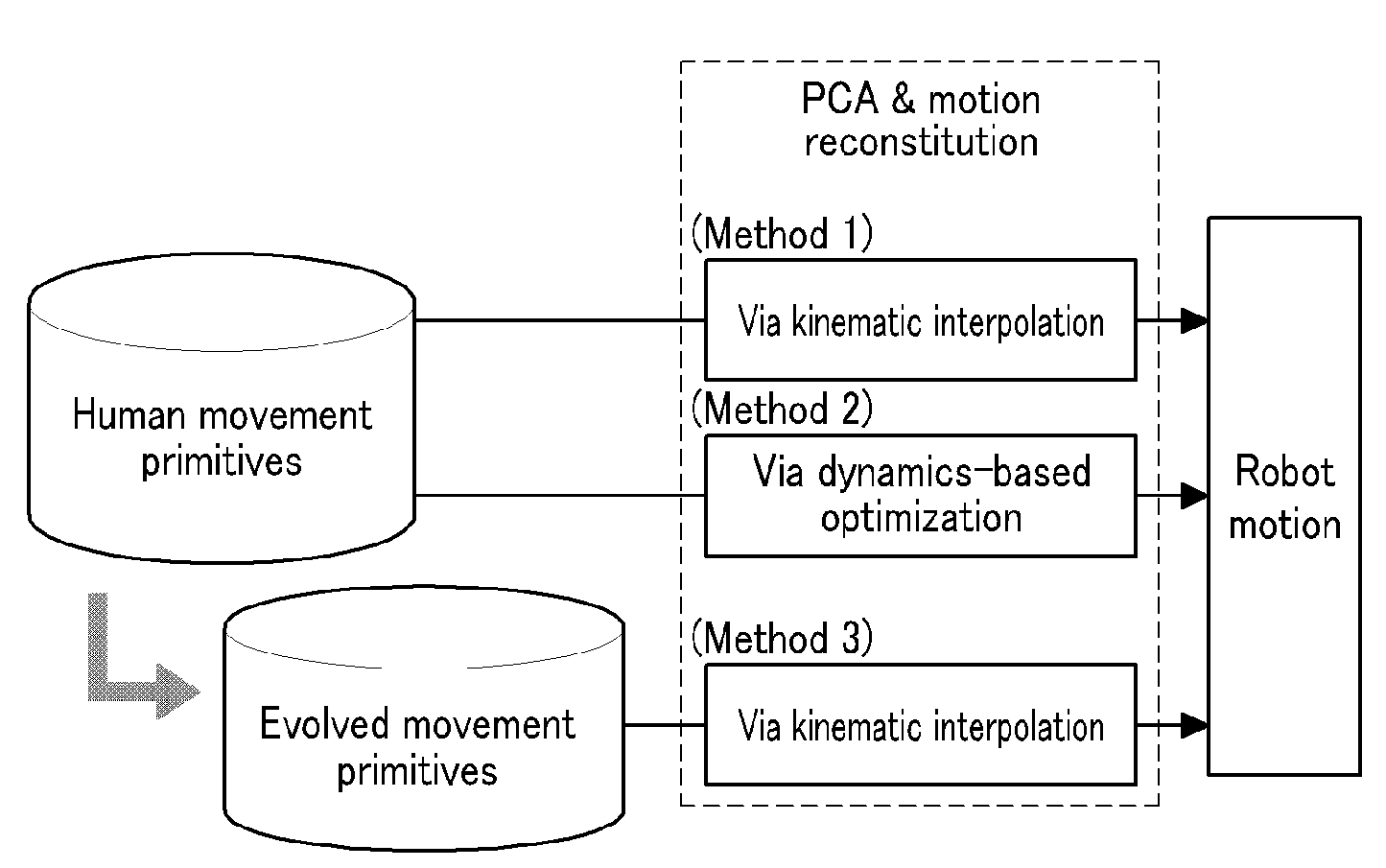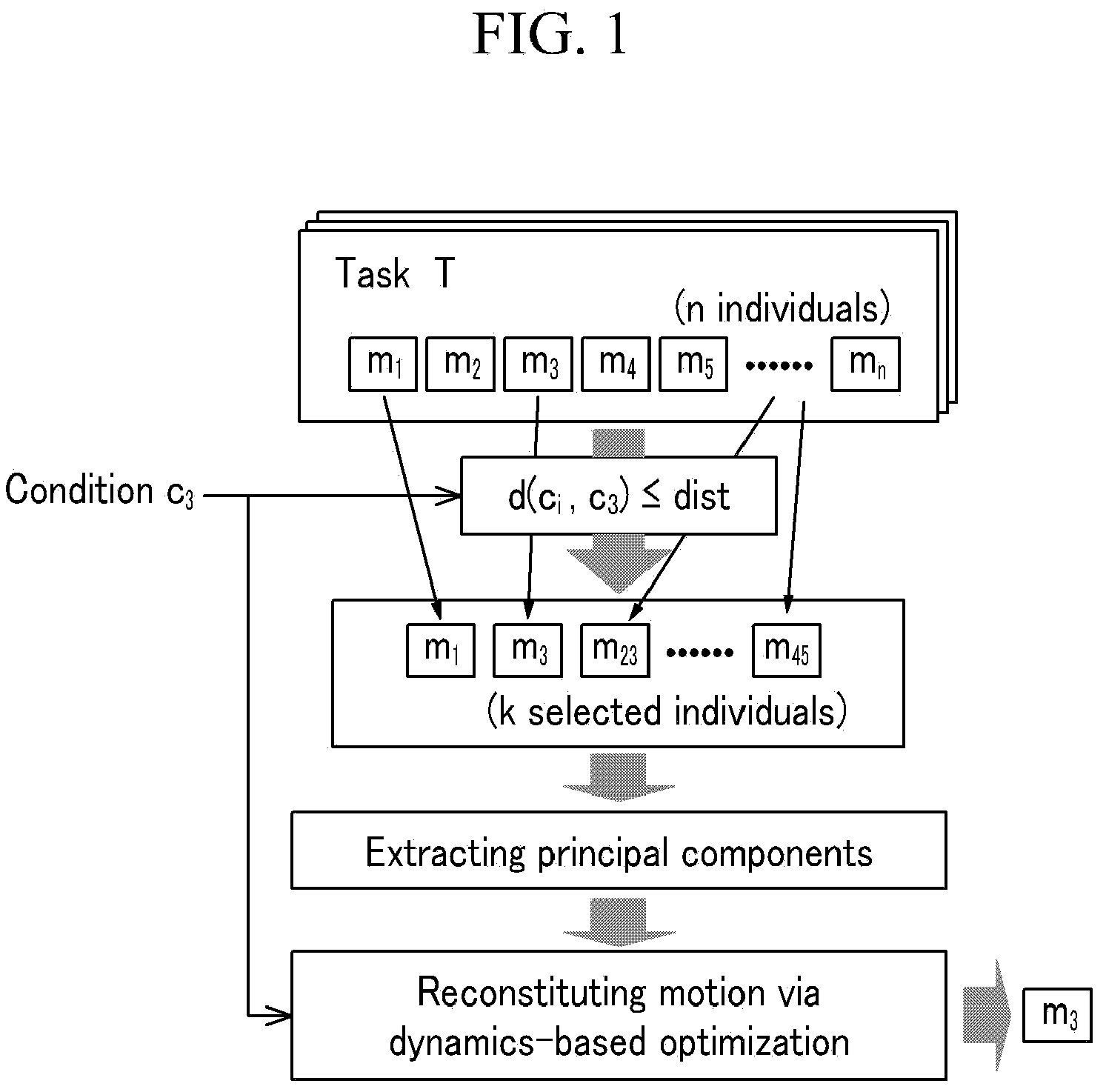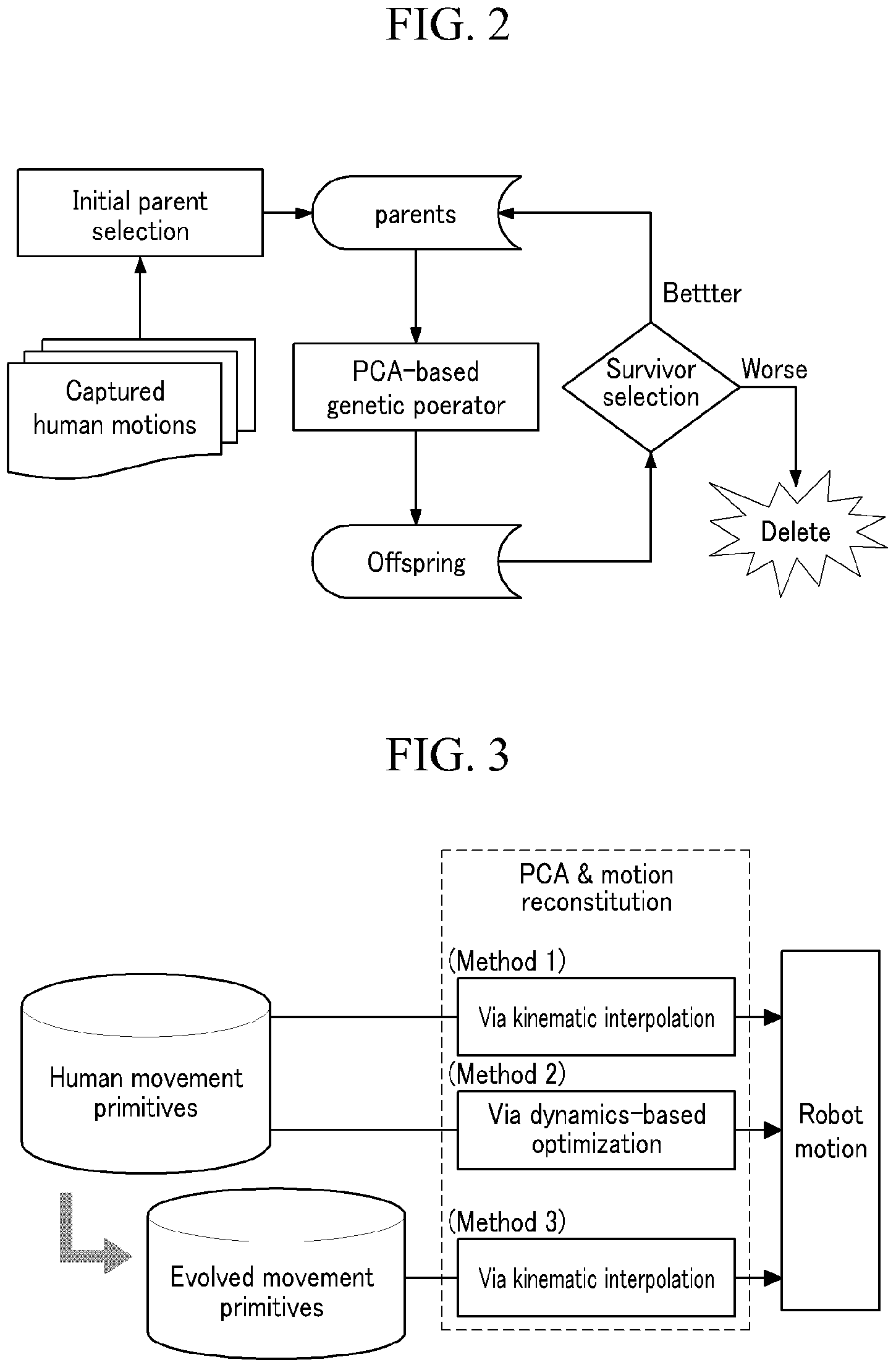Method for controlling motion of a robot based upon evolutionary computation and imitation learning
a robot and evolutionary computation technology, applied in the field of robot control, can solve the problems of many differences in dynamic properties, inability to capture motions in advance, and inability to physically record and store every motion required for a robot, etc., and achieve the effect of convenient application to a robo
- Summary
- Abstract
- Description
- Claims
- Application Information
AI Technical Summary
Benefits of technology
Problems solved by technology
Method used
Image
Examples
experimental example
[0103]FIG. 4A is a perspective view of a humanoid robot “MAHRU,” which were used in the experimental example, and FIG. 4B is a schematic view of a 7-degree-of-freedom manipulator that includes waist articulation and a right arm.
[0104]In order for a robot to catch a thrown ball, the robot has to be capable of tracing the position of the ball and expecting where it can catch the ball. In addition, the robot has to be capable of moving its hand toward the expected position and grabbing the ball with fingers. However, the object of the experimental example is to get a robot to create a human-like movement so that it is assumed that the other capabilities are already given.
[0105]FIG. 5A is a perspective view of an experimenter before catching a ball thrown to him, FIG. 5B is a perspective view of the experimenter who is catching a ball thrown to him, and FIG. 5C is a perspective view of the experimenter who is catching a ball thrown above his shoulder. FIG. 6A is a front view of 140 catc...
PUM
 Login to View More
Login to View More Abstract
Description
Claims
Application Information
 Login to View More
Login to View More - R&D
- Intellectual Property
- Life Sciences
- Materials
- Tech Scout
- Unparalleled Data Quality
- Higher Quality Content
- 60% Fewer Hallucinations
Browse by: Latest US Patents, China's latest patents, Technical Efficacy Thesaurus, Application Domain, Technology Topic, Popular Technical Reports.
© 2025 PatSnap. All rights reserved.Legal|Privacy policy|Modern Slavery Act Transparency Statement|Sitemap|About US| Contact US: help@patsnap.com



